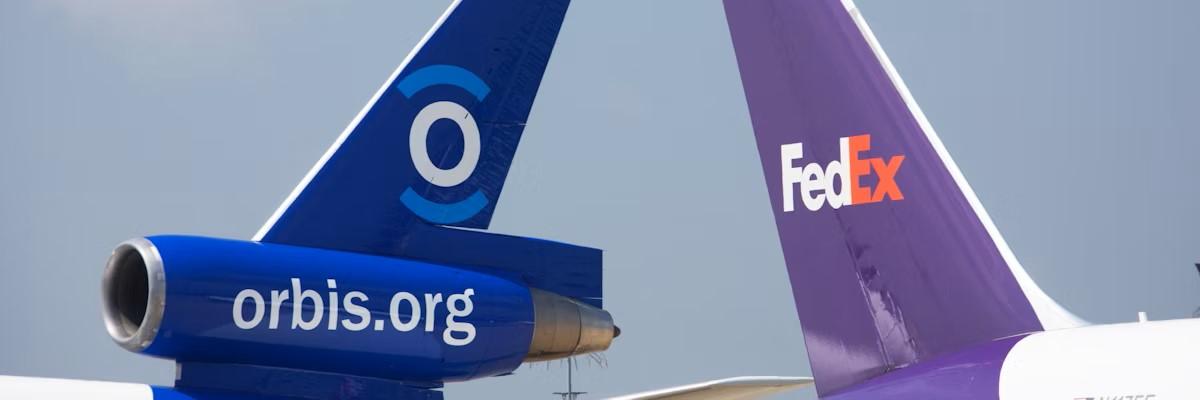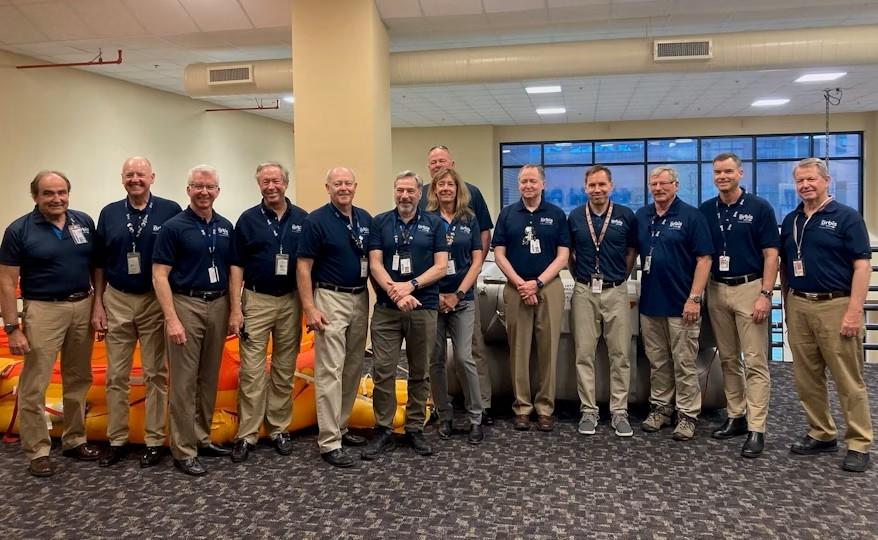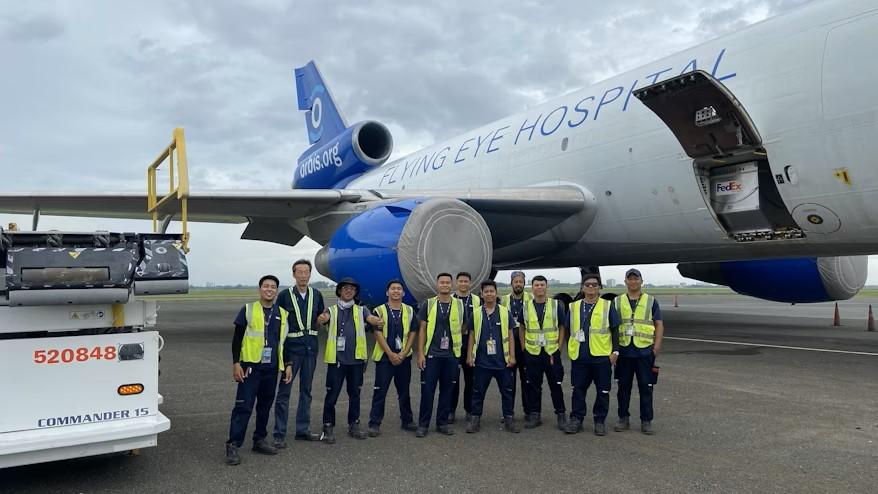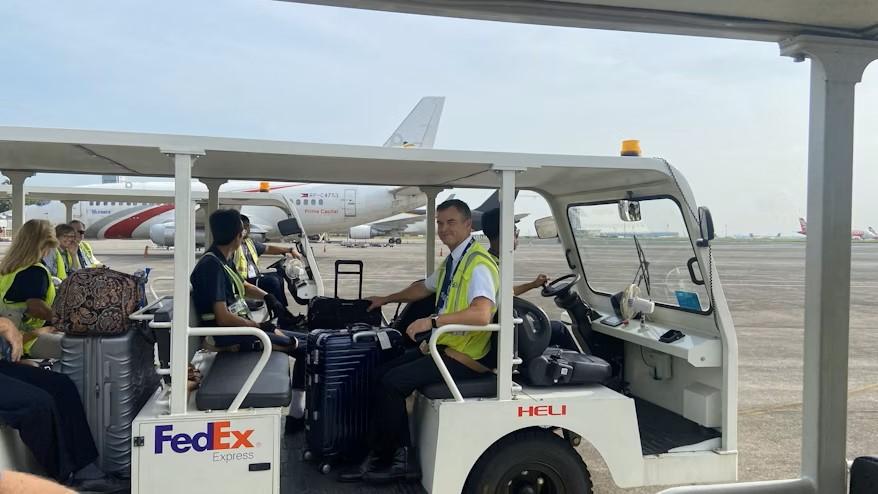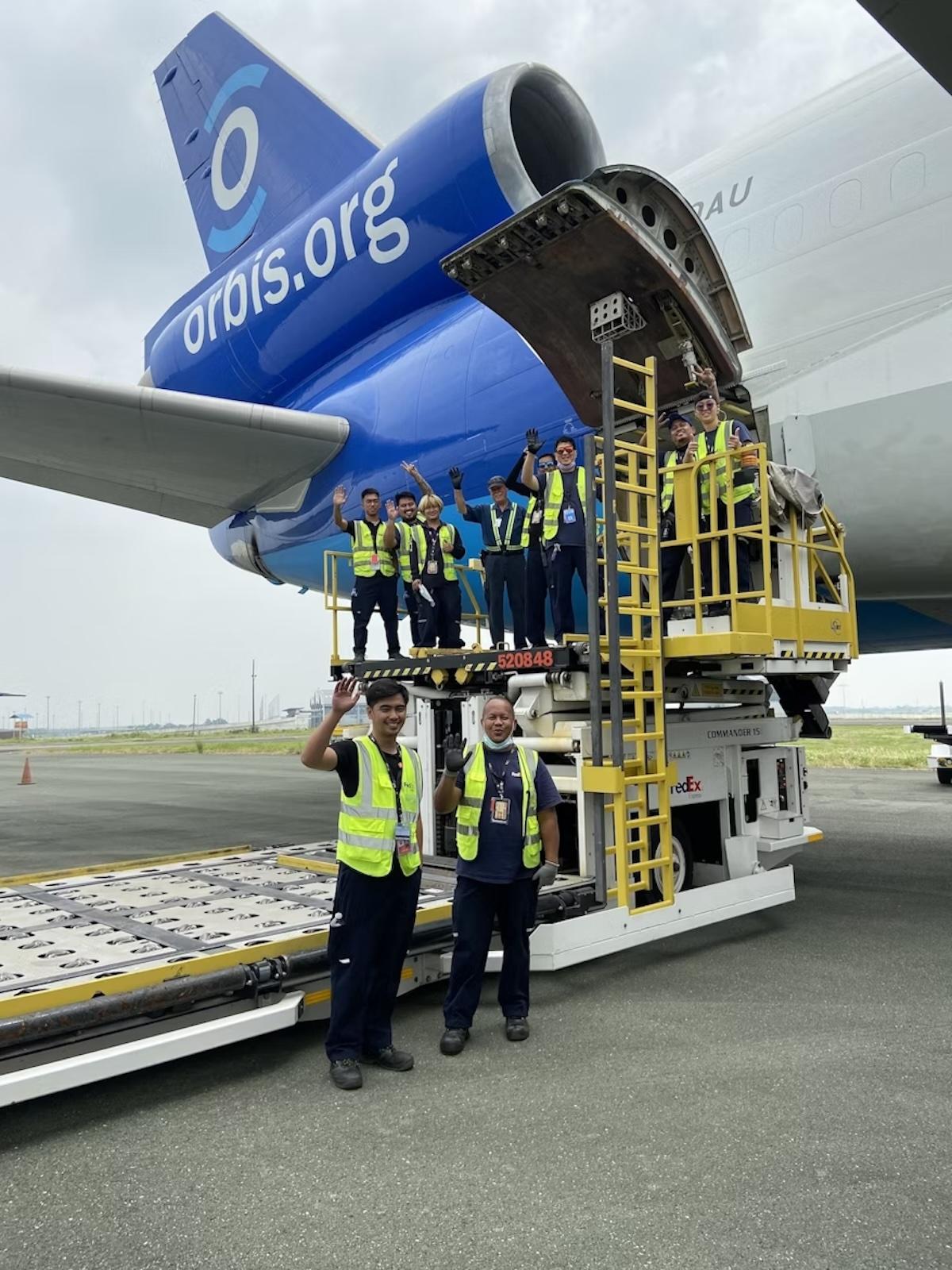Behind the Scenes: How FedEx Helps Keep the Flying Eye Hospital in the Sky
Behind the scenes: How FedEx helps keep the Flying Eye Hospital in the sky
While the Flying Eye Hospital is known around the world for delivering cutting-edge eye care and training, the magic behind the mission starts long before the first patient is seen. It takes a dedicated network of people, months of planning, and round-the-clock technical support to ensure that every Orbis mission takes off smoothly—and safely. Here's a behind-the-scenes look at the essential work being done to keep the plane mission-ready for 2025 and beyond, all thanks to FedEx and other key partners.
Essential Pilot training
FedEx serves as Orbis’s approved Part 142 training center, playing a vital role in maintaining the proficiency and currency of our volunteer flight crew.
Each April, Orbis pilots—comprised entirely of retired or active FedEx pilots—gather at FedEx headquarters in Memphis, TN, for comprehensive annual training. This includes MD-10 simulator sessions, classroom instruction, international mission planning, and emergency equipment training, all designed to ensure they remain proficient and mission-ready to deliver sight-saving care around the world.
Throughout the year, pilots stay current by completing four-hour simulator events, which include Initial and Recurrent Proficiency Checks (IPC and PC), warm-up sessions, and "3 and 3s" — training flights designed to meet FAA landing currency requirements. These simulator events are made possible through close coordination between the FedEx training schedulers and the Orbis training office, who work together to plan and schedule training, assign instructors, and provide evaluators as needed.
Most instructors and all evaluators are active FedEx pilots, who often accommodate Orbis simulator events around their regular flying schedules. This collaborative effort ensures our flight crews maintain the highest standards of safety, skill, and preparedness for every project. We can’t thank FedEx enough for sharing their equipment, expertise, and manpower to help get our aircraft to where it’s needed.
Clark FedEx team support
The FedEx team in Clark, Philippines (CRK) plays a vital role in supporting the Flying Eye Hospital and ensuring our aircraft remains mission ready. Their cross-departmental collaboration—spanning Aircraft Maintenance, Ramp Office, Customer Service, Customs Clearance, Security, and offices of the Sr. Manager and Managing Director—provides us with seamless, day-to-day support during each visit.
From transportation to and from the aircraft parking location to providing GPU, air conditioning units, lift trucks, maintenance stands, loaders, and even flight crew catering, the CRK team steps in with enthusiasm and warmth.
FedEx receives all Orbis medical supplies at Clark and clears them through their freeport to help keep costs down. FedEx even helped move the plane to a different part of the airport recently when our staff weren’t available.
FedEx employees, are, simply put, an extension of the Orbis Flying Eye Hospital team. Each arrival and departure are met with smiles, hugs, and genuine curiosity about our programs and the people we serve. We are deeply grateful for their commitment—and they should be proud of the role they play helping people around the world access improved eye care.
Maintenance planning and engine runs:
While the plane is parked between projects in Clark, Philippines, the Orbis maintenance team conducts a variety of monthly system checks. These include engine runs, tire pressure checks, filter changes, and evaluations of Ground Support Equipment (GSE) to ensure the aircraft remains ready for takeoff at a moment’s notice.
Looking ahead, maintenance planning is underway for the Summer 2025 A Check, which will be conducted by the Orbis maintenance team with support from FedEx. Additionally, early preparations have already begun for the 2026 C Check, including the logistics of securing a maintenance location and sourcing parts and materials. FedEx supplies the majority of the parts for these checks and makes a considerable contribution toward the cost of the maintenance checks each year.
2026 program planning:
The project teams are working hard conducting airport assessments along with logistical and program planning visits for the 2026 Flying Eye Hospital projects. In March 2025, members of the team traveled to Peru for an initial assessment and planning visit to prepare for a three-week project scheduled for April 2026. In June, similar initial planning visits are scheduled for a planned two-week Macau project and three-week Vietnam project in 2026. These initial planning visits serve to introduce Orbis and the Flying Eye Hospital to government officials and local leaders, assess host hospitals and airports for project structure and feasibility, and design clinical training plans tailored to meet partner and participant needs.
Medical equipment maintenance:
Of course, the plane is primarily an ophthalmic teaching facility – and while it takes a lot to keep the plane in the air, there’s also a lot of work required to make sure its state-of-the-art medical equipment functions correctly.
Just like the aviation components, all medical equipment on the plane is subject to periodic maintenance to comply with regulations, performed this time by the biomedical engineering staff, the manufacturer, or a third party. This helps ensure efficiency, operational reliability and long-term cost savings, but most importantly, it keeps the patients safe.
It really does take a village to ensure this plane continues to travel the world, sharing world-class ophthalmic training with local teams. Thanks to all those who contribute to the maintenance of the plane, but especially to FedEx, who puts the “flying” in “Flying Eye Hospital”.
Stay tuned for more news from our upcoming Flying Eye Hospital project in Ghana, where FedEx is a Title Sponsor.

